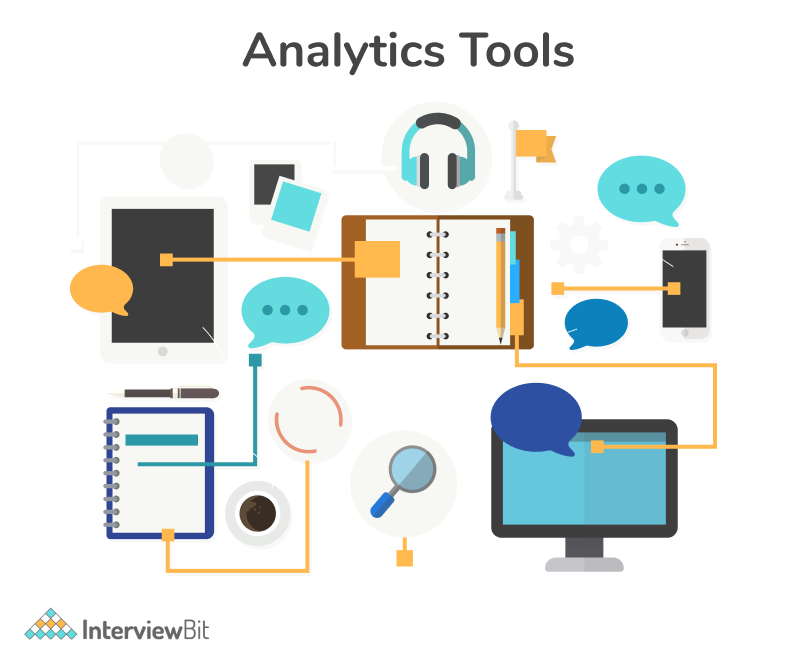Encourage Your Group with Actionable Insights from Analytics
Wiki Article
Boost Performance and Success With Data Analytics
In today's data-driven landscape, companies are increasingly identifying the critical role of data analytics in enhancing functional performance and success. By systematically assessing information, companies can reveal critical insights that notify strategic choices, streamline processes, and tailor customer experiences.Understanding Data Analytics
In today's data-driven landscape, recognizing information analytics is crucial for organizations intending to improve operational efficiency and drive success. Information analytics involves the organized computational analysis of data collections to reveal patterns, relationships, and understandings that inform decision-making. By utilizing various strategies, such as statistical analysis, maker understanding, and anticipating modeling, organizations can transform raw information right into actionable knowledge.The procedure usually starts with information collection, where pertinent information is collected from multiple sources, including transactional databases, client interactions, and market patterns. This information is then cleansed and arranged to make certain precision and consistency. Once the data is prepared, analytical devices and software application are utilized to explore and imagine the info, making it possible for stakeholders to identify abnormalities and trends.
Inevitably, recognizing information analytics encourages companies to make educated decisions based upon empirical evidence as opposed to intuition. It facilitates targeted strategies that can maximize source appropriation, improve client fulfillment, and boost general performance. As organizations significantly acknowledge the value of data-driven understandings, a strong grasp of information analytics ends up being an essential expertise for groups and leaders alike, placing them for sustained success in an affordable environment.

Secret Benefits for Companies
Services that leverage information analytics can unlock a plethora of benefits that considerably boost their operations and productivity. One of the primary advantages is improved decision-making. Data analytics gives actionable insights stemmed from real-time data, permitting businesses to make educated selections that line up with market needs and customer choices.
Additionally, information analytics cultivates enhanced client experiences. By comprehending consumer actions and choices, businesses can customize their offerings, causing boosted satisfaction and commitment. This individualized strategy often causes greater conversion prices and repeat service.
Furthermore, data analytics enables businesses to identify arising chances and fads. By remaining in advance of the curve, companies can exploit on brand-new markets and advancements before their competitors.
Applying Data-Driven Approaches
Successful application of data-driven strategies calls for a thorough understanding of both available data and organizational objectives resources. Organizations must first specify their objectives clearly, making certain positioning in between information initiatives and critical goals. This clarity enables groups to focus on appropriate metrics and insights that drive decision-making.Following, companies need to assess their existing information infrastructure. This involves evaluating information quality, ease of access, and combination capabilities. High-grade data is important for exact evaluation, as inadequate data can lead to misdirected approaches and wasted resources. Organizations should establish procedures for information collection, cleaning, and administration to preserve data integrity.
Additionally, cultivating a data-driven culture is critical. Workers whatsoever levels need to be urged to utilize data in their everyday procedures. Training programs and workshops can improve information proficiency, empowering staff to make educated decisions based on analytical insights.
Tools and Technologies Review
A robust suite of innovations and tools is important for organizations aiming to harness the full capacity of data analytics. These tools help with the collection, processing, and visualization of data, allowing organizations to derive actionable insights.At the foundational level, data monitoring platforms such as SQL databases and NoSQL systems give efficient data storage and retrieval capabilities. For data handling and analysis, programs languages like Python and R, together with frameworks such as Apache Spark, enable complex calculations and artificial intelligence applications.
Visualization devices, consisting of Tableau and Power BI, transform raw data more info here right into user-friendly graphical layouts, making understandings easily accessible to stakeholders in any way degrees. In addition, cloud-based platforms like Google Cloud and AWS provide scalable storage space and processing services, accommodating the expanding volumes of data organizations run into.
For sophisticated analytics, predictive modeling and AI-driven options are progressively taken on, permitting companies to anticipate patterns and enhance decision-making procedures. Integrating these devices into existing operations is extremely important; companies that efficiently utilize this modern technology can substantially improve operational effectiveness and drive profitability. Therefore, investing in the right devices and technologies is a strategic essential for any kind of data-driven organization.
Study of Success
Leveraging data analytics has actually led many companies to achieve amazing enhancements in efficiency and profitability. One noteworthy instance is a huge retail chain that executed predictive analytics to enhance stock monitoring. By analyzing historical sales data and client trends, the business minimized excess inventory by 30%, causing significant cost savings and enhanced capital.An additional example can be found in the manufacturing market, where a leading auto manufacturer utilized information analytics to enhance its production procedures. By monitoring equipment efficiency in real-time, the company determined inefficiencies and traffic jams, leading to a 20% boost in total tools efficiency (OEE) This not only improved production rates but also decreased downtime and maintenance prices.

These instance studies highlight how information analytics can drive tactical decision-making, maximize processes, and ultimately enhance both efficiency and productivity across different fields.
Conclusion
In final thought, the integration of data analytics into service operations provides significant chances for enhancing efficiency and success. By go to this web-site systematically examining information, companies can recognize inadequacies, maximize customer experiences, and make educated choices.In today's data-driven landscape, understanding data analytics is necessary for companies aiming to enhance functional performance and drive earnings. Data analytics entails pop over to these guys the methodical computational evaluation of information collections to uncover patterns, relationships, and understandings that inform decision-making. Information analytics provides actionable understandings obtained from real-time information, permitting services to make educated selections that align with market needs and customer choices.
High-quality information is essential for precise analysis, as bad information can lead to misguided strategies and squandered sources. Organizations has to develop procedures for information collection, cleaning, and monitoring to maintain data stability.
Report this wiki page